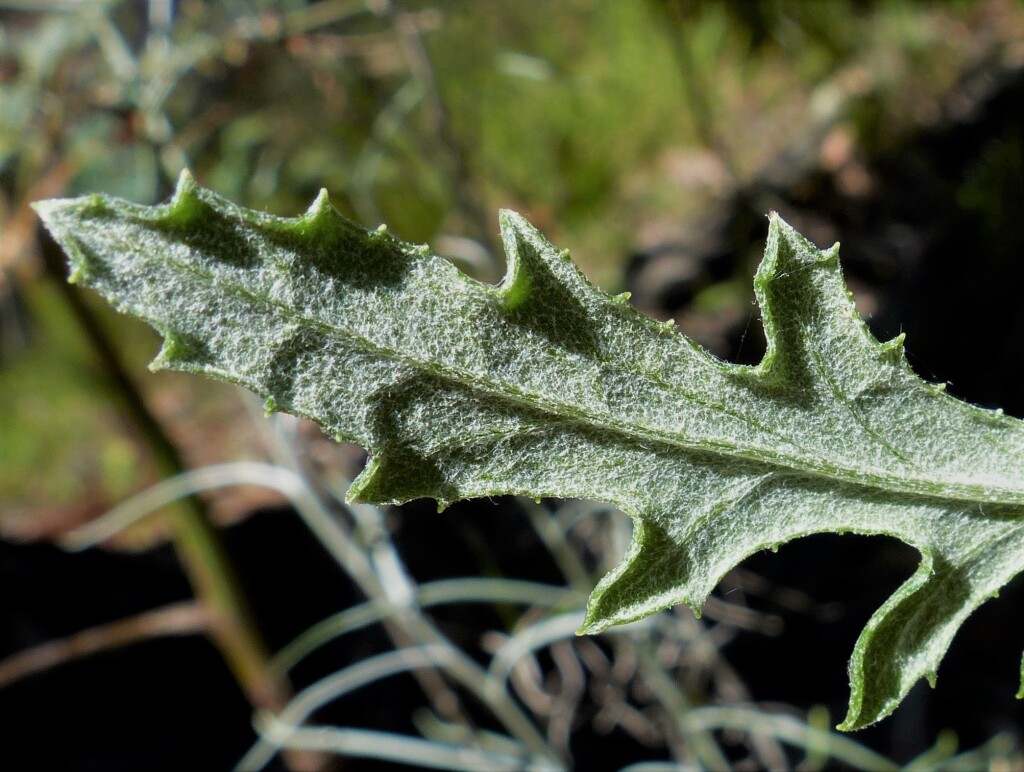Senecio glomeratus
Desf. ex Poir.Variable, erect or ascending, annual or short-lived perennial herb, c. 30–140 cm high, new growth usually greyish from cobwebbed hairs. Leaves sessile (but often pseudopetiolate), auriculate, lanceolate to obovate (the uppermost often c. linear), 3–15 cm long, 10–50 mm wide, usually prominently and jaggedly toothed or lobed, rarely nearly entire; upper surface sparsely cobwebbed or glabrous; lower surface usually retaining dense cobwebbed hairs, rarely glabrescent. Inflorescence usually comprising several dense corymbs, each c. 2–5 cm across, often with 100–400 capitula in all, but sometimes sparse; capitula non-radiate; involucre cylindric, 4–5.5 mm long, whitish-cobwebbed at base; bracts 11–13; bracteoles present; florets c. 30–45, bisexual and unisexual. Cypselas cylindric, 1–1.8 mm long, brown, broadly ribbed, papillose-hairy in intervening grooves; pappus of slender hairs 5–6 mm long, deciduous. Flowers mostly Sep.–Jan.
LoM, MuM, Wim, GleP, Brid, VVP, VRiv, MuF, GipP, OtP, WaP, Gold, CVU, GGr, DunT, NIS, EGL, EGU, WPro, HSF, HNF, OtR, Strz, MonT, HFE, VAlp. Except for the far north and north-west, common and widespread throughout the State, usually on disturbed or bare ground, or amongst rocks.
Specimens with characters intermediate between Senecio glomeratus and e.g. S. hispidulus, S. quadridentatus, S. minimus are not uncommon and are probably hybrids. Senecio laticostatus was known only from the type specimen ('flats beyond the Brodribb River', Jan. 1855), until 1984 when a collection, apparently of this species (subsequently confirmed by R.O. Belcher) was made near Tyers. The distinctive characters of S. laticostatus were the broadly 4-lobed corollas of the very few (3 or 4) disc florets, the cypsela with 5 high narrow ridges, and the involucral bracts that lack scarious margins. The first of these attributes do not accord with the Tyers specimen (the feature of the cypsela probably a function of the immaturity of the fruits), and the latter feature is to be found not uncommonly in S. glomeratus to which Belcher compares S. laticostatus.
In older specimens the hairs at the base of the stems may fall off leading to confusion in identification.
Walsh, N.G. (1999). Senecio. In: Walsh, N.G.; Entwisle, T.J., Flora of Victoria Vol. 4, Cornaceae to Asteraceae, pp. 941–965. Inkata Press, Melbourne.
 Spinning
Spinning




